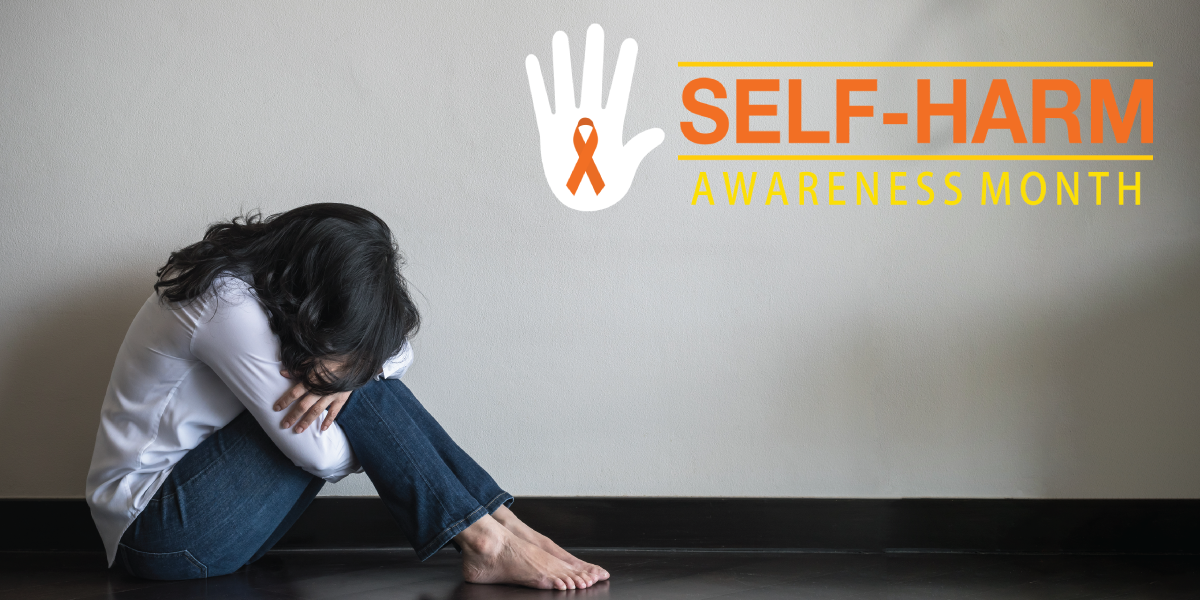Self-harm is when you hurt yourself as a way of dealing with very difficult feelings, painful memories, or overwhelming situations and experiences. For some people, self-harm is linked to specific experiences and is a way of dealing with something that’s either happening at the moment or which happened in the past.
This definition does not distinguish acts of self-harm according to intent, and for brevity, in this review, we use the term “self-harm” to refer to acts that are attributed to suicidal and non-suicidal motivations. Self-harm among young people is a recognized problem in the mental health of populations in high-income countries, where it is associated with a number of poor outcomes including eventual suicide. Sometimes you might not know why you hurt yourself. If you don’t understand the reasons for your self-harm, you are not alone and you can still get help.
Self-harm can be a way of dealing with deep distress and emotional pain. It may help you express feelings you can’t put into words, distract you from your life, or release emotional pain. Afterward, you probably feel better—at least for a little while. But then the painful feelings return, and you feel the urge to hurt yourself again. Self-harm includes anything you do to intentionally injure yourself. Some of the more common ways include -Cutting or severely scratching your skin, Burning or scalding yourself, Hitting yourself or banging your head, Punching things or throwing your body against walls and hard objects, Sticking objects into your skin, Intentionally preventing wounds from healing, Swallowing poisonous substances or inappropriate objects. Self-harm can also include less obvious ways of hurting yourself or putting yourself in danger, such as driving recklessly, taking too many drugs, or having unsafe sex.
The relief that comes from cutting or self-harming is only temporary and creates far more problems than it solves. Relief from cutting or self-harm is short-lived and is quickly followed by other feelings like shame and guilt. Meanwhile, it keeps you from learning more effective strategies for feeling better.
Keeping the secret of self-harm is difficult and lonely. Maybe you feel ashamed or maybe you just think that no one would understand. But hiding who you are and what you feel is a heavy burden. Ultimately, secrecy and guilt affect your relationships with friends and family members and how you feel about yourself. You can hurt yourself badly, even if you don’t mean to. It’s easy to end up with an infected wound or misjudge the depth of a cut, especially if you’re also using drugs or alcohol.
You’re at risk for bigger problems down the line. If you don’t learn other ways to deal with emotional pain, you increase your risk of major depression, drug, and alcohol addiction, and suicide.
Self-harm can become addictive. It may start off as an impulse or something you do to feel more in control, but soon it feels like the cutting or self-harming is controlling you. It often turns into a compulsive behavior that seems impossible to stop.
While cutting and self-harming occur most frequently in adolescents and young adults, they can happen at any age. Because clothing can hide physical injuries, and a seemingly calm disposition can cover up inner turmoil, self-injury in a friend or family member can be hard to detect.
Self-harm happens in different ways, some more obvious and serious than others. Digital self-harm or self-cyberbullying is when teenagers create alternative online identities for themselves on social media sites and post cruel comments about themselves. The alternative identities might also get cruel comments from other people.
Some teenagers deal with strong emotions in less obvious but still serious ways. These include binge drinking, taking a lot of drugs, having unsafe sex, or starving themselves. Teenagers who self-harm often try to hide it. They’re often ashamed of their behavior and worry that people will be angry with them, reject them, or not understand why they’re self-harming.
It can be hard to understand what’s going on and why – and your child might not have the words to tell you. But by staying calm, being respectful and reassuring, not judging or reacting negatively, and actively listening, you might get insight into your child’s thoughts, feelings, behavior, and ideas about how to help.
The most important thing is letting your child know that strong feelings are normal but also hard to have. And when you’re in your teens, things can seem even harder. If you find your child in the act of self-harming, it’s best to speak calmly, directly, and without judgment. You might say something like, ‘I can see that you’re very upset. I hadn’t realized things had built up so much. You can talk to me about this. I won’t get angry at you.
It’s best to avoid reacting with anger or threats. Saying that your child is just doing it for attention won’t help either. Most self-harm isn’t about getting attention. Ask your child to tell you where they are or to focus on what’s going on around them. This can help to bring them back to the present. Ask your child if you can get help.
Provide first aid for any cuts or injuries in a calm way without fuss. Get medical attention for anything that looks serious. This can show your child that their body is important and worth caring for. You might say something like, ‘I’d like to help you heal those cuts’ or ‘Let’s get some antiseptic to help those cuts heal quickly’.
In any situation, you don’t have to be sure that you know what’s going on in order to reach out to someone you’re worried about. However, there are red flags you can look for – Unexplained wounds or scars from cuts, bruises, or burns, usually on the wrists, arms, thighs, or chest, Blood stains on clothing, towels, or bedding; blood-soaked tissues, Sharp objects or cutting instruments, such as razors, knives, needles, glass shards, or bottle caps, in the person’s belongings, Frequent “accidents.” Someone who self-harms may claim to be clumsy or have many mishaps, and in order to explain away injuries, Cover up.
A person who self-injures may insist on wearing long sleeves or long pants, even in hot weather, Need to be alone for long periods of time, especially in the bedroom or bathroom, and Isolation, and irritability. Your loved one is experiencing a great deal of inner pain—as well as guilt at how they’re trying to cope with it. This can cause them to withdraw and isolate themselves.
The bottom line is that cutting and self-harm won’t help you with the issues that made you want to hurt yourself in the first place. No matter how lonely, worthless, or trapped you may be feeling right now, there are many other, more effective ways to overcome the underlying issues that drive your self-harm. Whatever the reasons for self-harming, it’s important to know that there is help available if you want to stop.
You can learn other ways to cope with everything that’s going on inside without having to hurt yourself. Injuring is often the only way you know how to: Cope with feelings like sadness, self-loathing, emptiness, guilt, and rage, Express feelings you can’t put into words or release the pain and tension you feel inside, Feel in control, relieve guilt, or punish yourself, Distract yourself from overwhelming emotions or difficult life circumstances, Make you feel alive, or simply feel something, instead of feeling numb.
Asking for help and having support are very important if you are trying to stop self-harming. You must do this when you feel ready to talk about it. It doesn’t matter who you talk to, as long as it’s someone you trust and feel comfortable with. Talking to someone is what is important. You don’t have to feel that you need to deal with this on your own. For young people used to carrying burdens on their own, it can be hard to receive support. Part of recovery is trusting people enough to let them help you.
Talking to someone you trust can help you discover why you self-harm and help to find new ways to cope with difficulties. Finding out what makes you happy, sad, angry, isolated, vulnerable, or strong can help you develop other ways of dealing with these feelings. Counseling is a good way of exploring these thoughts or call India Helplines; JEEVAN AASTHA HELPLINE, 1800-233-330.



